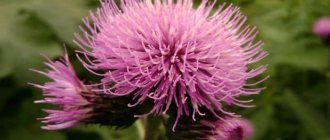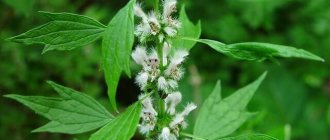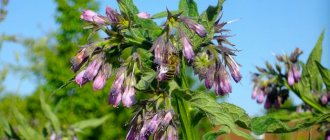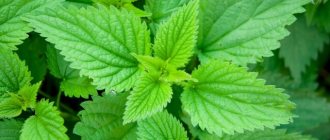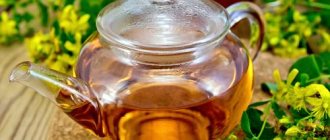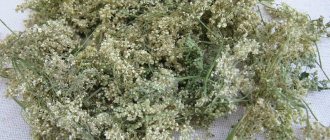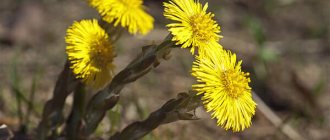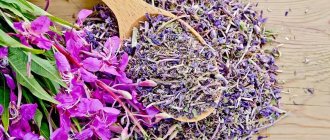This is a perennial herbaceous plant of the Valerian family. Its other names are cat root, meun, cat grass, odolyan, aromatic, goat, sore, earthen incense, etc. The name of valerian from Latin (valere) means “to be healthy.” The healing properties of this plant have been known since Ancient Times and were used by Hippocrates, Avicenna, and Dioscorides. It was considered the best sedative and a miracle plant, pacifying thoughts, calming the heart and soul. Medicinal recipes have survived to this day; they are recognized and widely used by official and traditional medicine. The plant began to be cultivated and grown on a large scale for the pharmaceutical industry.
pharmachologic effect
Valerian root has a sedative and antispasmodic effect on the body, reducing the level of excitability of the central nervous system. There is an antispasmodic effect on the smooth muscles of the digestive organs and urinary system.
The drug helps normalize the onset of sleep. In this case, the sedative effect appears gradually and relatively slowly, but is stable.
The drug produces a choleretic effect, activates the secretion of the gastrointestinal tract, and promotes the dilation of coronary vessels. With prolonged use of galenic forms of the drug, a weak hypotensive effect is observed.
Beneficial properties of valerian
The widespread use of the herb is determined by its rich chemical composition. At the same time, the highest concentration of unique active substances is observed in the root. Which of them have the main therapeutic effect is still not reliably known. Scientists believe that the healing properties are due to the unique balance of many substances.
The most active component is essential oil, the content of which in the roots can range from 2 to 3.5%.
The main medicinal components of valerian: isovaleric acid, borneol isovalerate, camphene, borneol esters of many acids, alkaloids (valerine, hatinine), terpenoids, ketones, alcohols and other substances. For the regulation of nerve impulses, a high content of B vitamins (B1, B2, B6) is important; iron valerian contains the most trace elements.
The whole complex of substances inhibits the impulses of the cerebral cortex and has a relaxing effect on the muscular system, thereby achieving a calming effect. Sleep becomes calmer and deeper, which allows for greater clarity of thinking during the day. Regular use in recommended doses stabilizes the emotional background and helps maintain balance in stressful situations.
Valerian, whose beneficial properties extend not only to the nervous system, has the following additional effects:
- antispasmodic;
- choleretic;
- mild hypotensive;
- increases gastric secretion;
- normalizes blood circulation in the vessels of the heart.
The herbal remedy is not an immediate action drug. Sometimes, at high dosages, a single dose has a slight relaxing effect on smooth muscles, but immediate sedative or hypnotic effects should not be expected.
The active ingredients of valerian tend to accumulate and have a positive effect only with regular and long-term use. Any form of medication is used in courses of about 30 days. Noticeable positive changes occur within 10–14 days.
Instructions for use of Valerian root with rhizomes (Method and dosage)
Instructions for use provide for internal use of the product in the form of an infusion. To prepare it, you need to take 6-20 g of plant material per 200 ml of water.
The raw materials should be filled with hot water, closed with a lid and heated in a water bath for 15 minutes. After this, the infusion needs to be cooled, strained, squeezed out and diluted with water so that you end up with 200 ml of the product. The finished infusion should be taken one tablespoon three or four times a day.
You should drink the product half an hour after eating. Children under three years old should take half a teaspoon, children from 3 to 7 years old should take 1 teaspoon of infusion, children aged 7 to 12 years should take one dessert spoon three times a day. The infusion should be shaken before using it.
The use of bags requires that 3 filter bags need to be filled with 100 ml of boiling water and left in a covered container for 15 minutes. Next, you need to squeeze out the bags and bring the volume to 100 ml.
Valerian contraindications
Absolute contraindications for use:
- An allergy to valerian, which sometimes manifests itself even to its smell.
- Chronic enterocolitis and serious liver pathologies.
- Unauthorized administration to children or during pregnancy.
Consultation with a specialist is also necessary before using valerian during lactation.
Each of the pharmaceutical forms has contraindications. The alcohol tincture should not be consumed by pregnant women and children. This medicine is contraindicated for alcohol dependence. Before taking tablet forms, you should check the tolerance of all substances in the composition.
Analogs
Level 4 ATC code matches:
Alora
Motherwort Extract
Novo-Passit
Cardiovalen
Liked
Carmolis
Valerian tincture
Lotusonic
Relaxil
Persen Forte
Persen
Phytosed
Sedavit
Motherwort Forte Evalar
Dormiplant
Sondox
Sedafiton
Peony tincture
Menovalen
Bromcamphor
You can buy many drugs in pharmacies; the main active ingredient is valerian officinalis.
These drugs are: Valerian P , Valerian extract , Valerian Forte , etc.
Valerian overdose
The harm of valerian most often manifests itself with an unreasonable increase in the one-time, daily dose or treatment for longer than 2 months.
The first signs that there is an excess of active substances in the body:
- nausea, vomiting;
- indigestion with diarrhea or constipation;
- increased drowsiness or, conversely, overexcitation;
- allergic urticaria or red spots on the face, arms, stomach.
The appearance of even a few of these symptoms should force you to stop taking valerian, increase your drinking regimen and consult a doctor. Further intoxication can lead to pressure surges, nervous system disorders, and fainting. In this case, you should call an ambulance, urgently rinse the stomach and then act based on the symptoms.
Price, where to buy
The price of valerian rhizomes with roots (50 g pack) averages 80 rubles.
The drug in powder form costs on average 60 rubles per pack of 20 filter bags.
- Online pharmacies in RussiaRussia
- Online pharmacies in UkraineUkraine
ZdravCity
- Valerian rhizomes with roots filter bags 1.5g No. 20 Ivan-tea JSC RU
RUR 141 order - Valerian rhizomes with roots raw materials rev. pack 50 gIvan-tea JSC
74 RUR order
- Valerian rhizomes with roots PharmaColor pack 50 g JSC Krasnogorskleksredstva
119 RUR order
- Valerian rhizomes with roots PharmaColor 1.5g filter pack. 20 pcs. JSC Krasnogorskleksredstva
84 rub. order
show more
Blank
Valerian is collected for drying in late autumn, when the stems turn brown.
It is better to collect biennial roots; they contain the greatest amount of nutrients and vitamins. The valerian rhizome is dug up, cleared of soil, washed and dried a little in the fresh air. Dry by spreading it in a small layer in a dark and well-ventilated room or in a dryer at a temperature not exceeding 50 degrees. For uniform drying, it is recommended to periodically turn the raw materials over. Store in a tightly closed container in a cool and dry place. During drying and storage, valerian rhizome enhances its healing properties and aroma (this is due to the formation of essential oils).
Types and varieties
The genus of Valerian is very numerous and, in addition to the species Valerian officinalis, includes 288 species, including:
- Amur valerian – Valeriana amurensis P.Smirn. ex Kom.;
- doubtful valerian – Valeriana dubia Bunge;
- Valeriana fedtschenkoi Coincy;
- whole-leaved valerian – Valeriana simplicifolia Kabath;
- valerian - Valeriana sisymbriifolia Vahl;
- lipolia valerian – Valeriana tiliifolia Troitzk.;
- tuberous valerian (tuberous) – Valeriana tuberosa L. and others.
Several small related species with medicinal properties are combined under the name Valerian officinalis:
- high valerian – Valeriana exaltata Mikan;
- brilliant valerian – Valeriana nitida Kreyer;
- valerian - Valeriana stolonifera Czern.;
- Russian valerian – Valeriana rossica Smirn.;
- Don valerian – Valeriana tanaitica Worosch.;
- Grossheim's valerian - Valeriana grossheimii;
- valerian hill - Valeriana collina Wallr. (Valeriana angustifolia Tausch);
- elderberry valerian – Valeriana sambucifolia Mikan;
- meadow valerian;
- Volga valerian – Valeriana wolgensis Kazak.
Valerian officinalis. Latin name : Valeriana officinalis L.
Valerian officinalis. Other names : pharmaceutical valerian, cat's herb, cat's root, forest incense, earthen incense, cistus, forty-shrub herb, shake grass, maun, odolyan, marian, aromatic, devil's potion, devil's rib, etc.
Special Recommendations
During pregnancy
The herb Valerian can be very useful, since in a woman in an interesting position, emotions often get out of control. You can take it at any time, even early.
Mechanism control.
When taking valerian, concentration of attention decreases, so it is not recommended to engage in work that requires great concentration during treatment. For example, driving a car, or getting involved in extreme sports.
For children
In children, Valerian causes the opposite effect in 50% of cases. With age, this percentage decreases.
Description
Valerian is a tall herbaceous plant:
- The flowers are small, pale pink and pale purple; collected in corymbose inflorescences.
- The leaves are serrated and located opposite each other.
- The stem is hollow, straight, with grooves.
- The rhizome is thick and short, densely planted with brown roots; have a specific smell and bittersweet taste.
- Blooms in the second year; flowering - in the second half of summer. When the plant has flowered, shed its seeds and began to dry, it is time to harvest rhizomes and roots for medicinal purposes. The second wave of valerian collection is in the spring.
Habitat
Valerian medicinal homeland is the Mediterranean. The plant is widespread in Europe, with the exception of the Far North and south, as well as in Central and Northern Asia.
About 40 species and varieties of valerian grow in the CIS. It can be found in almost the entire European part, in Ukraine, Crimea, the Caucasus, Western and Eastern Siberia, the Far East, Sakhalin, with the exception of the desert regions of Central Asia. Grows in a wide variety of soils.
Distribution of valerian officinalis: forest glades, edges, open forests, banks of reservoirs, rivers, lowlands, water meadows, damp places, grass and peat bogs, mountain slopes, among bushes, etc.
Usually it does not form dense thickets and grows sparsely. Grown on an industrial scale.
Side effects of valerian
Valerian, for all its beneficial properties, sometimes causes unwanted reactions from the body. They do not pose an immediate danger to life, but only if they are known in advance and the course is adjusted in a timely manner.
Side effects from taking:
- Any intake of valerian (even one-time) is accompanied by a slight decrease in the reaction rate. The side effect may increase in proportion to the dose and duration of treatment, which should be taken into account in situations requiring immediate response: driving, precision manipulation, operating dangerous mechanisms.
- Increased drowsiness may become noticeable after a 2-week course or appear later. To eliminate the side effect, reduce the dosage, shift the time of administration closer to bedtime, and use invigorating herbs and energy tinctures (Echinacea, Eleutherococcus) in the morning as recommended by a doctor.
- Taking high doses just before bed (eg the entire daily dose at one time) may cause hangover symptoms upon waking. Headache, nausea, heaviness throughout the body will not appear if the dose is divided into several doses at intervals of several hours.
- Daytime intake of valerian may be accompanied by lethargy and drowsiness during daylight hours. Such an individual reaction to the drug requires contacting a doctor to select another sedative that does not reduce the quality of life.
The following side effects are very rarely noted: decreased body temperature, dizziness, constipation or diarrhea. A situation where, instead of calm and confidence, apathy and depression appear, also requires discontinuation of the drug.
At the pharmacy
"Valerian extract VIS"
- 40 capsules, 0.4 g each. (total 200 mg) Price – about 92 rubles.
- Prices for valerian preparations range from 40 to 100 rubles.
"Valerian root"
- Chopped root 200 gr. Price – about 400 rubles.
Drops “Corvalol”, “Valoserdin”, “Valocordin”, “Validol”
These are combination preparations containing valerian.
- Store in a dry, dark place, t-less than 25°C.
- Available without a doctor's prescription.
- Shelf life – 24 months.
Indications
Used for the following indications:
- Neuroses, hysteria, neurasthenia, manic-depressive states, insomnia;
- diseases of the cardiovascular system;
- migraine;
- epilepsy;
- hypertension;
- hyperfunction of the thyroid gland;
- menopause;
- some diseases of the oral cavity.
- External use:
- Heavy sweating;
- lichen planus and lichen planus;
- rashes and inflammation on the skin.
Frozen valerian juice has a stronger effect than fresh one and is used for:
- Involuntary muscle contraction (“eye twitches”);
- sunburn;
- severe weathering.
